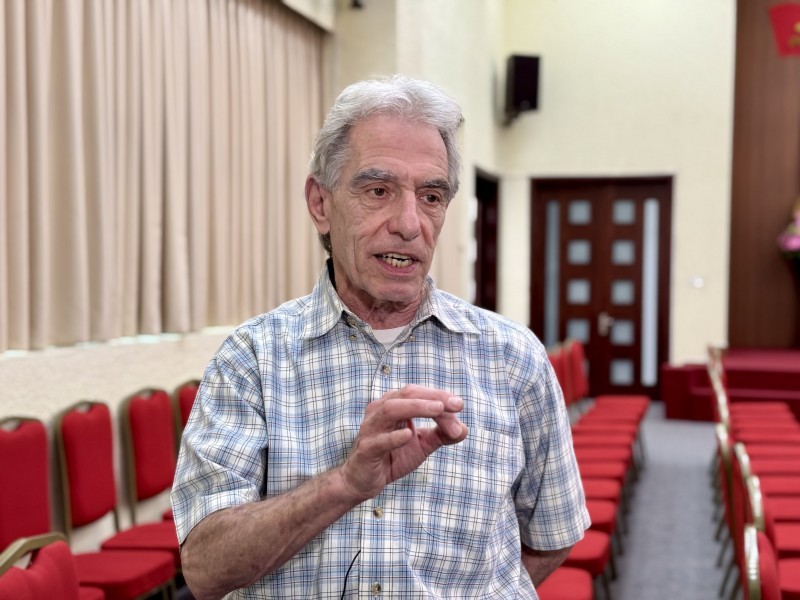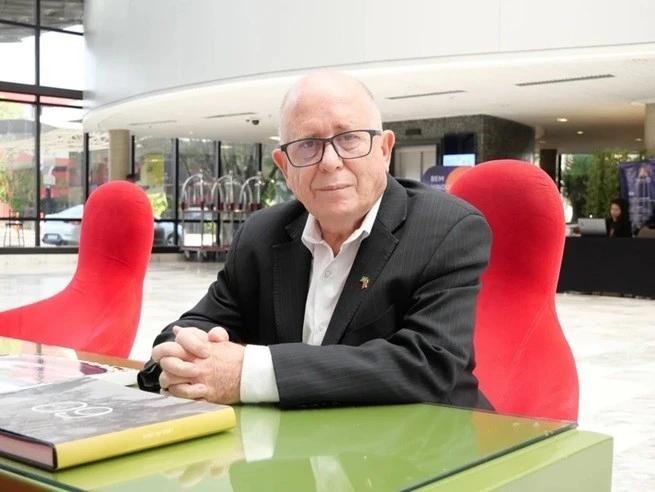“Decoding The Mystery Of Kinh Thien Palace Architecture” Opens In Hanoi
The exhibition introduced 22 unique artifacts, related to the architecture of Thang Long Imperial Palace during the Le Dynasty. This is the result of many years of research by the Imperial City Research Institute, the Vietnam Academy of Social Sciences, and the support of Chinese, Japanese, and Korean architectural experts.
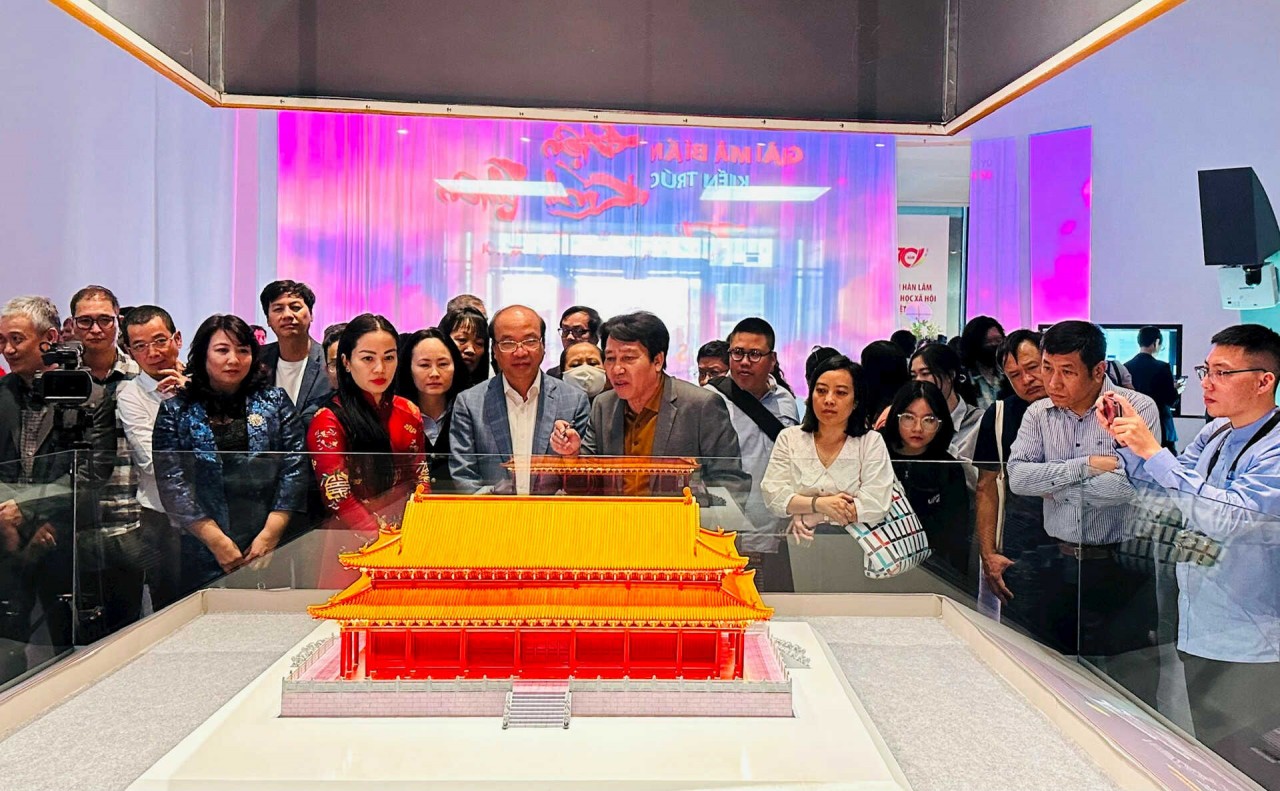 |
| The restoration of Kinh Thien Palace attracted many scientists, researchers, and the public. Photo: Linh Tam |
Based on the research results and comparison of techniques and architectural styles, researchers have restored the 3D model of Kinh Thien Palace. This is the most important building in Thang Long Royal Citadel, which UNESCO recognized as a World Heritage Site in 2000. It is at the center of the complex with the Doan Mon and the Flag Tower in front, the North Gate and the Hau Lau at its back, and walls to the east and the west.
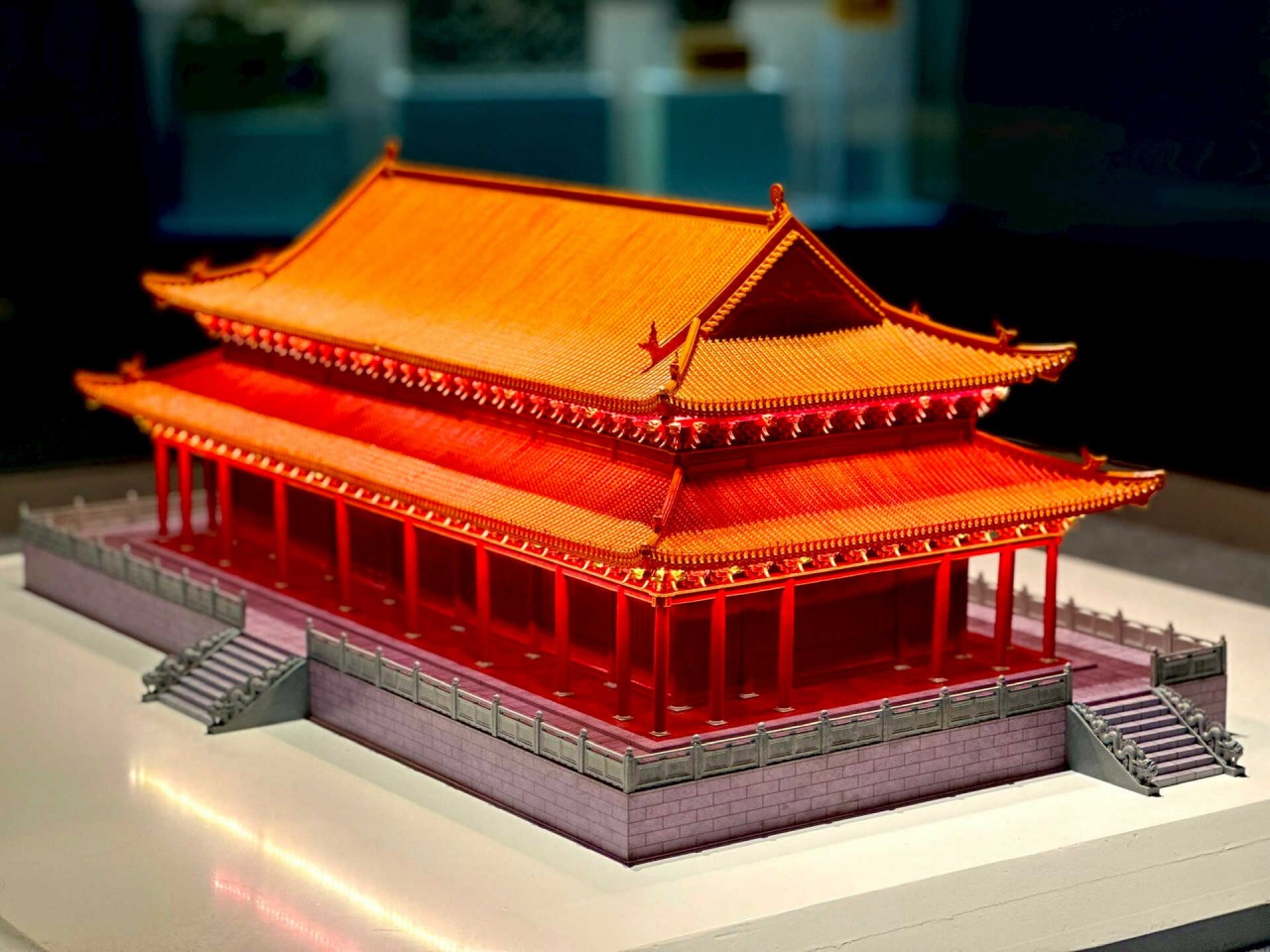 |
| The model of Kinh Thien Palace was restored by the Imperial City Research Institute after many years of research. Photo: Linh Tam |
Kinh Thien is the main palace and the most important building in the capital of the Oriental Monarchy. Doctor Tong Trung Tin of the Archeology Institute says the construction of Kinh Thien Palace was not much recorded in history books.
According to the National History Records of the Le Dynasty and the Vietnamese History Book of the Nguyen Dynasty, it was built in 1428 during the reign of King Le Thai To and was completed during the reign of King Le Thanh Tong.
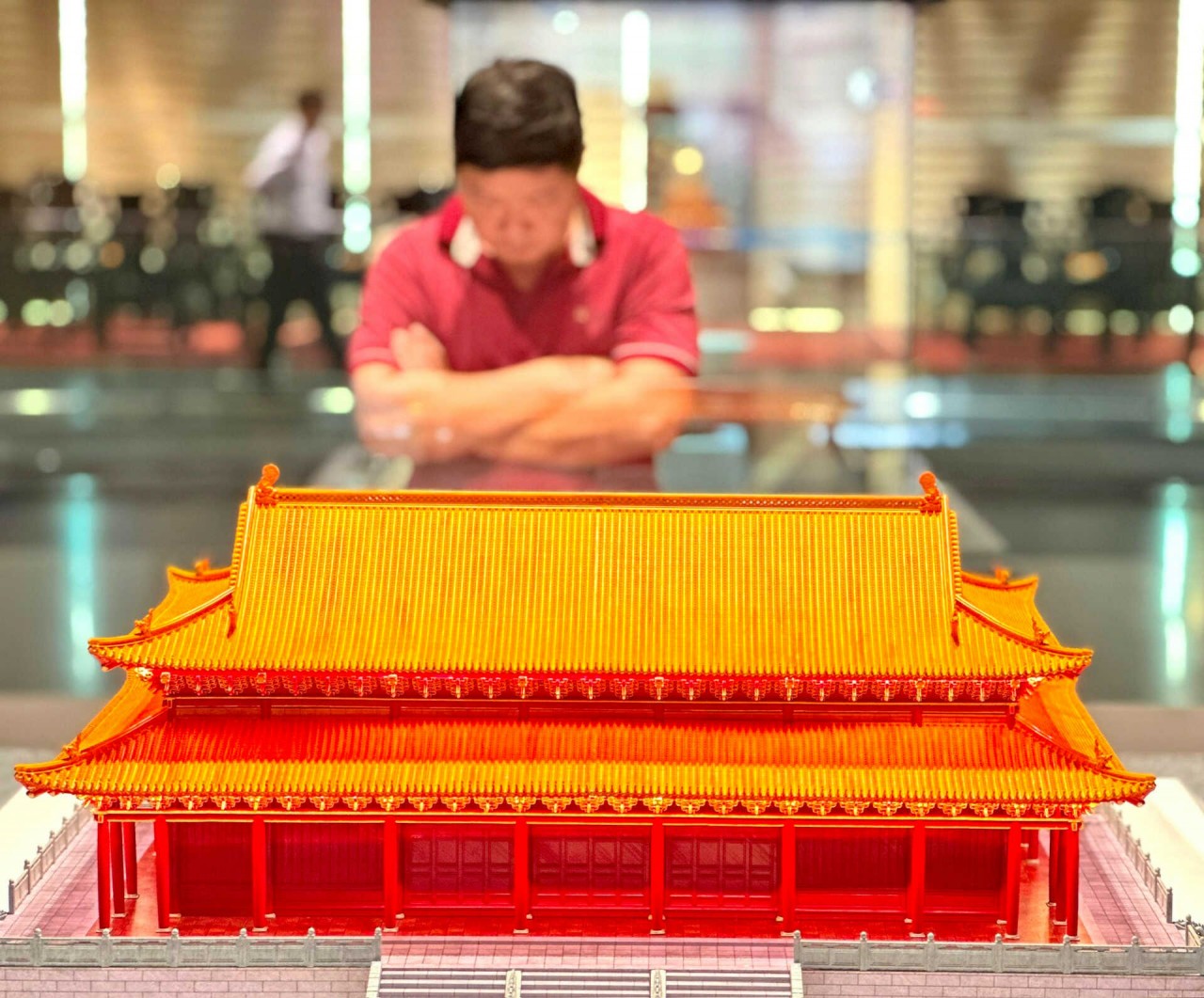 |
| Kinh Thien is the main palace and the most important building in the capital of the Oriental Monarchy. Photo: Linh Tam |
The restoration of Kinh Thien Palace aims to decode the mysteries of the architecture, thereby clarifying the scientific value of archaeological discoveries.
The result shows that Kinh Thien is a palace built on a high level. In front of the place, there is a dragon-carved stone step consisting of 11 steps, divided into 3 paths: the middle path is for the King and the two sides are for high-ranking mandarins.
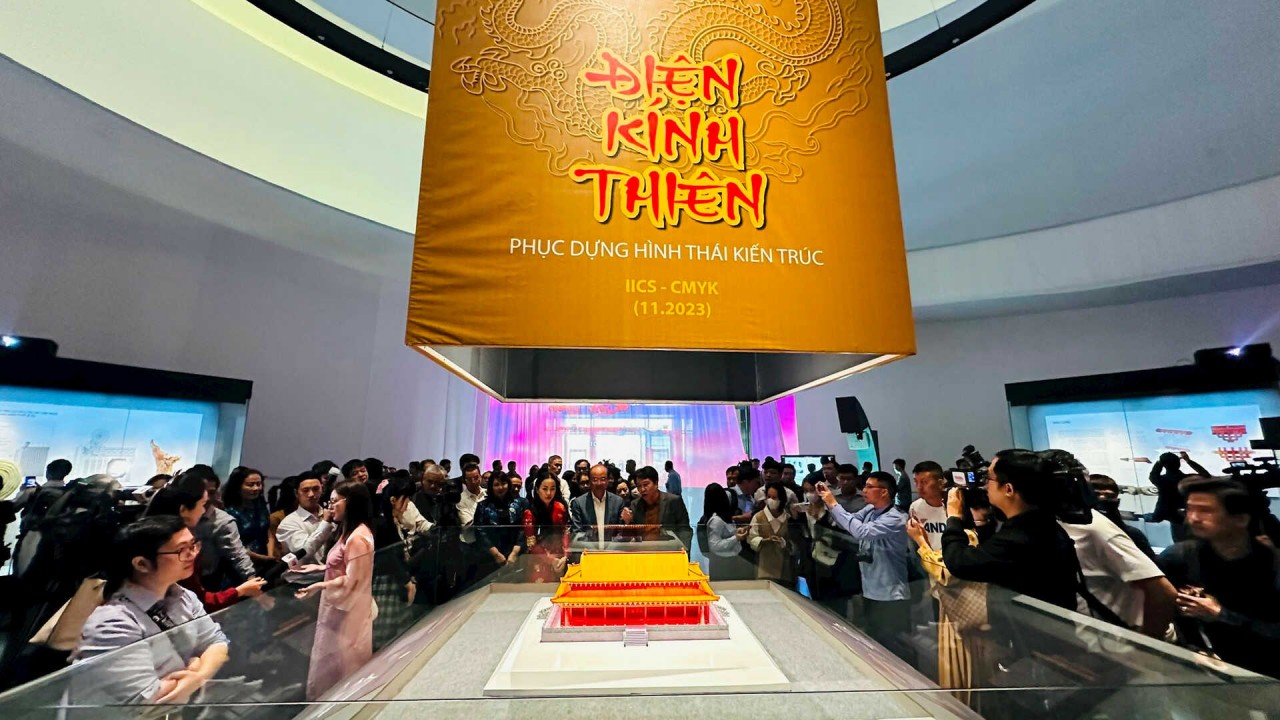 |
| The display attracts many visitors to the Hanoi Museum. Photo: Linh Tam |
On both sides of the temple's foundation, there are also stone steps carved with dragons. Made from green stone, the dragons all have a rising head with round bulging eyes, long branched antlers, manes flowing backward, and a half-open mouth holding a gem. The body of the dragons is serpentine with their tails getting smaller and their backs having cloud-shaped scales. The dragons are typical of sculptures in the Le dynasty.
According to Professor Bui Minh Tri, this is just the initial research result and there are still many issues that need to be further researched, but the image of Kinh Thien Palace's restoration helps people visualize the unique beauty of the architecture in the Le dynasty.
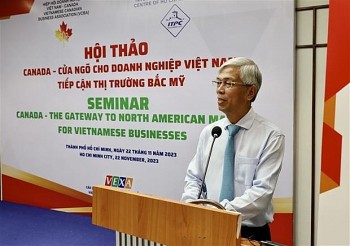 | Exhibition Center for Vietnamese Goods in Canada To Be Established Chairman of the Vietnam-Canada Business Association, said that they lay out a plan to establish an exhibition center for Vietnamese goods in Canada |
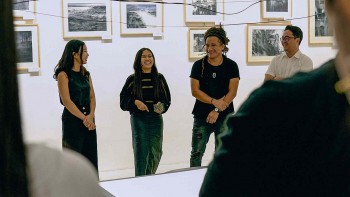 | Peruvian Artist Exhibits Paintings on Traditional Vietnam Paper Nicolás López, a Peruvian watercolor artist, is exhibiting his work in Ho Chi Minh City on giang paper created by the Mong ethnic minority group. |
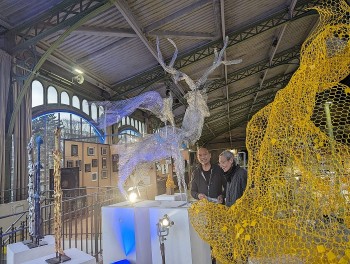 | Two Vietnamese Artists Received Francophone Economic Forum Awards The Secretary General of the International Organization of Francophonie (OIF) presented the Francophone Economic Forum (FFA) award to the Vietnamese delegation. |
Recommended
 Handbook
Handbook
Vietnam Moves Up 8 Places In World Happiness Index
 Handbook
Handbook
Travelling Vietnam Through French Artist's Children Book
 Multimedia
Multimedia
Vietnamese Turmeric Fish among Best Asian Dishes: TasteAtlas
 Handbook
Handbook
From Lost to Found: German Tourist Thanks Vietnamese Police for Returning His Bag
 Handbook
Handbook
Prediction and Resolution for the Disasters of Humanity
 Handbook
Handbook
16 French Films To Be Shown For Free During Tet Holiday In Vietnam
 Handbook
Handbook
Unique Cultural and Religious Activities to Welcome Year of the Snake
 Handbook
Handbook

